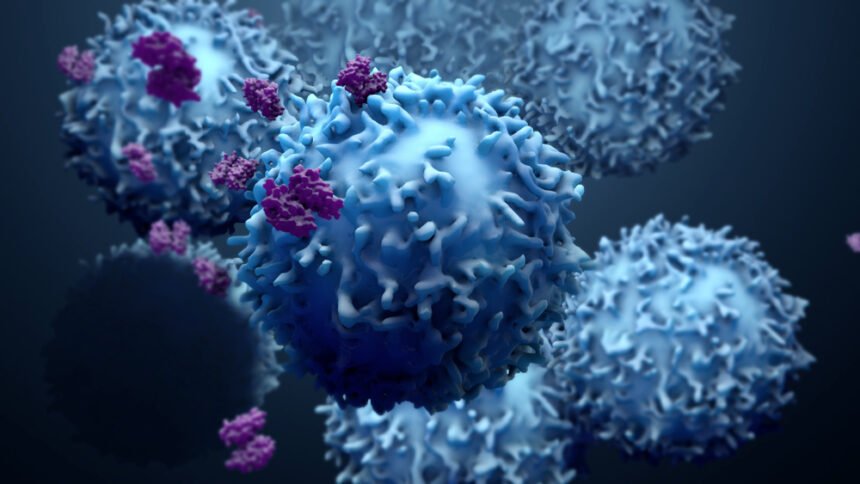Cytotoxic refers to a method that occurs in cell damage or cell death. The “cyto” prefix points to the cell and the word “toxic” means poison. The word is used to define chemotherapy medications that destroy cancer cells.
Inside our immune systems, we have cytotoxic cells such as T cells that destroy viruses, bacteria, viruses, and cancer cells. These drugs affect the cell phase to stop them from expanding. Unlike drugs that are unique to the cell life cycle, these DNA-modifying substances destroy cells at any moment in time.
Cytotoxic drugs are used as effective drugs in the treatment of cancer. Cytotoxic drugs are also used in the production of antibody-drug conjugates, ADC?s in short. There are presently two forms of cytotoxic agents available, one is a microtubule disruption agent and the other is a DNA-modifying agent.
The demand for cytotoxic drugs is primarily driven by an increase in the incidence of cancer diagnoses, public and private awareness campaigns, an expansion in the population prescribed for chemotherapy, and other socio-economic influences.
How do they work and what are their benefits?
Cytotoxic drugs function by blocking cells in specific positions in the growth phase. They are most likely impacting fast-expanding cells such as cancer cells, stem cells, and hair follicles.
The reason why most chemotherapy cycles are repeated is that the cells are in different parts of the division phase.
They harm all cells that divide, even healthy tissue cells. However, since cancer cells often multiply much quicker than normal cells, they are especially susceptible to cytostatics. The impact on normal cells is far less noticeable and normal cells heal quicker.
Different methods are followed for delivering cytotoxic drugs to patients depending on the type of cancer and the type of medication used. They can be given orally or injected into a muscle or a vein. These medications may be inserted into the fluid around the spine in special cases. No matter what form is used, cytotoxic drugs get absorbed in the blood and carried throughout the body.
Several forms of cytotoxic drugs are used in cancer treatment, which has various kinds of effects. The most common approach is to prescribe a mixture of many different cytotoxic drugs. The efficacy of chemotherapy varies on the nature of the tumor, its structure, the rate of growth, and the percentage of cells in the state of distribution.
These medications are also prescribed as high-dose chemotherapy. It is used in the treatment of leukemia, certain lymphomas, and brain tumors in adolescents. also, stem cell transplantation is needed as high-dose chemotherapy willfully damages the bone marrow. After chemotherapy, bone marrow function can be recovered using stem cell transplantation. Stem cells may be the patient’s own or may be derived from a donor.
Research and Development on Cytotoxic Drugs Gains Pace
The accelerated demand for drugs has prompted major drug manufacturers to establish manufacturing and R&D facilities. Projects are undertaken by different organizations to promote consciousness, educate the public, and secure funding for the disease are expected to stimulate regional developments.
North America is predicted to be the dominant consumer of cytotoxic drugs. The Asia Pacific, except China and Japan, is projected to see substantial growth in the global cytotoxic drugs industry Due to the increase in patient demand and price reduction.
Europe is expected to see a rise in the use of Cytotoxic Drugs due to increased demand for high price medications and favorable circumstances for cancer treatment. Also, a growing number of specialty services will contribute to better accessibility to cytotoxic drugs.
Research Initiatives by Leading Companies to Drive Sales
The market for cytotoxic drugs is moderately competitive and comprises global and regional players. Some of the major players in the market for cytotoxic drugs include Pfizer, Novartis AG, Sanofi, F., GlaxoSmithKline PLC, Lonza, Merck & Co.Inc. , Johnson and Johnson, Celgene Corp., Hoffmann-La Roche AG, Company and Teva Pharmaceutical., Amgen Inc., and Eli Lilly.
Growing partnerships, market segmentation, and awareness-raising campaigns on cancer care are some of the strategies employed by these businesses to retain their marketplace. For example, in December 2019, Johnson & Johnson was running financial aid projects for DOXIL used in cancer therapy that offers free or low-cost insurance coverage to patients. This was done to extend the options for treatment and to achieve a competitive edge.
What are the potential side effects?
One of the main disadvantages of cytotoxic drugs is that it causes adverse side effects in some patients. The suppression of certain cells such as RBC and WBC is one of the most severe side effects. You can suffer from infections very quickly when white blood cells are suppressed. Red blood cells bring oxygen to your muscles. If these are blocked, you may have anemia that accompanies fatigue and extreme tiredness.
Some of the, side effects include appetite loss, changes in skin or rashes, nausea, pain or changes in the nervous system, diarrhea, hair loss, indigestion, infertility, and others. Remember that each cytotoxic drug has certain side effects that are unique to it. Often, the specific side effects can differ greatly from patient to patient.
Conclusion
It is said that cancer would be one of the most prominent diseases in the future. Investments and researches will boost the growth of cytotoxic drugs further. Hence, the demand for cytotoxic drugs will remain strong, as they continue to provide effective solutions in killing or stopping the cancerous cells from multiplying

